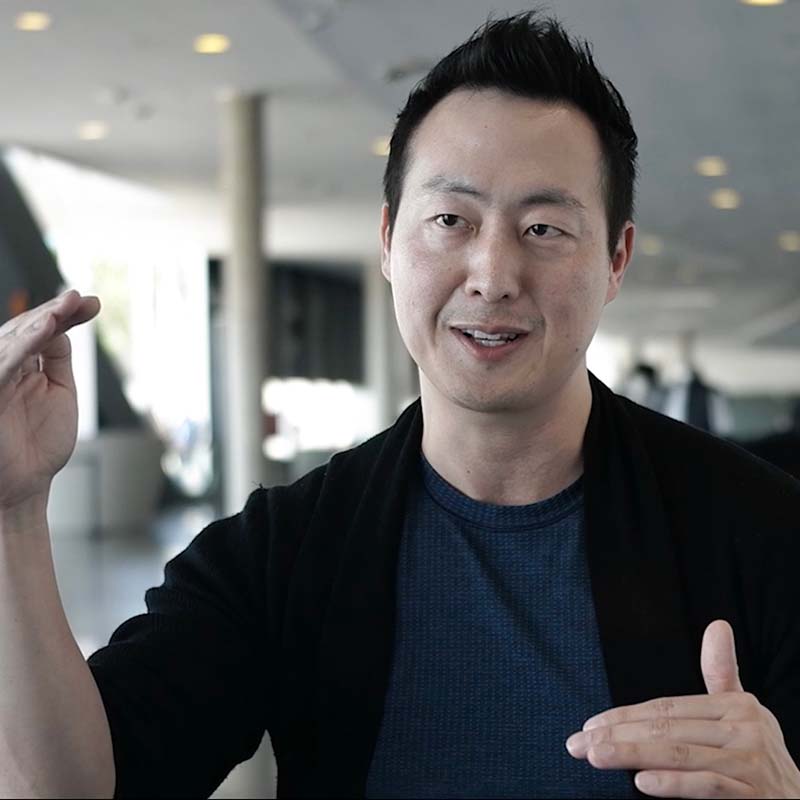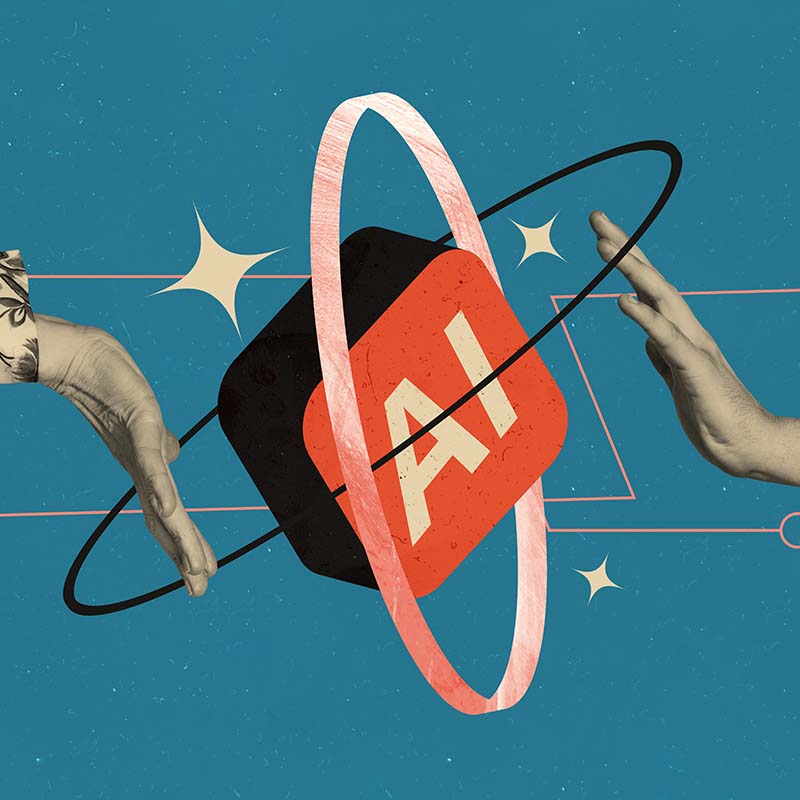Many people know first-hand that the world’s farmland is in crisis. They see it slipping away year after year.
According to the U.N.'s Food and Agricultural Organization, the world’s topsoil could be depleted by 2080. Scientists are working feverishly to find solutions using modern technologies such as cloud computing, artificial intelligence and real-time data analysis.

Much like human gut bacteria, the soil microbiome contains billions of bacteria, fungi and other organisms, all bustling in a teaspoon-pinch of soil. It is vital to the health of crops and to the quest to feed the planet, according to Ryan McClure, a microbiome computational scientist at the Pacific Northwest National Laboratory in Richland, WA.
“(Soil) has a lot of really critical ecosystem functions like cycling of carbon, nitrogen and the promotion of plant growth,” said McClure.
In this Tech Barometer podcast segment, McClure takes listeners into the microbiome community that makes topsoil function. He explains how his research is on a quest to find answers that are critical to the future of farming.
Transcript (unedited):
Jason Lopez: The soil in which we grow food is disappearing and civilization is headed for a major problem. This isn't clickbait. It's really happening. This is the tech barometer podcast from the forecast. I'm Jason Lopez. On this episode, an interview with a scientist investigating the microbiome of soil, an area of science that is just in its infancy in much the same way. The investigation of the microbiome of the human body is just making its first steps. Since 1970 half the world's topsoil has been depleted either by being washed or blown away, or its nutrients have been exhausted. And this depletion is accelerating. Studies show that if no acts are taken to stop this trend, the world will lose its topsoil. In 60 years, scientists are doing something about it, making new discoveries about erosion and how to save soil. And they're seeing soil in a new way, really discovering it for the first time in terms of the billions of bacteria and other organisms that make for healthy soil.
Ryan McClure: We're very interested in the soil microbiome. That's the collection of all these microbial species that reside in soil because it has a lot of really critical ecosystem functions like cycling of carbon and nitrogen and the promotion of plant growth. And one of the things that I think is really important in kind of one of the new frontiers that we need to focus on is not so much understanding the role of individual species within the soil microbiome, but how do these species interact and lead to emergent properties of the community as a whole. And I think with the new advances that we've been making in data collection and in data interpretation, it's becoming more and more possible for us to understand the soil microbiome, the whole is greater than the sum of the parts. And that's really, what's important with soil microbiology. And I think we're getting closer and closer to be able to answer that question.
Jason Lopez: Ryan McClure is a microbiome computational scientist at the Pacific Northwest national laboratory in Richland Washington, which is in the Southern part of the state amid a major agricultural corridor in the Western new United States. He's the co-author of the scientific paper, deconstructing the soil microbiome into reduced complexity, functional modules. We're delighted to bring you this interview with him. And it starts with Ryan painting a big picture of the soil microbiome.
Ryan McClure: The main thing that we're doing that impacts consumers is the very intimate link between the soil microbiome and the promotion of plant growth. But the other main thing that we're looking at here is plant growth agriculture and feeding the planet's population. That's obviously a big, critical, important thing that we need to maybe expand as the human population expands and better understand the soil microbiome. These microbial species is going to lead directly to better ways to promote agriculture worldwide.
Jason Lopez: Right? Well, let's go from this macro view down to, into the soil itself. And so from the as practical sort of place, how did you do the actual analysis of the soil? Did you do, uh, soil samples in the field or did you do it in the lab? Where did it happen?
Ryan McClure: Right. So, um, direct analysis of the native and natural soil in its site is difficult because it's so complex. It's hard to gather data. It's hard to interpret that data. So what we did was we moved that soil into a laboratory setting where it's more controlled and we applied 66 different cultivation conditions on this starting soil microbiome. We changed the nutrients, the food that we fed it, we changed stress conditions. We changed oxygen levels. We changed antibiotics. We changed a lot of things. And when we cultured under different conditions, we found that different sets of microbial species, uh, emerge. And that's what returns these functional modules, a set of microbial species that may carry out a particular function or respond to a certain kind of environmental cue. Once we had these functional communities emerge. Now we're in a position to look much more deeply at who's in them. What are they doing and how do they relate to each other so that we can better understand how do each of these 66 unique individual parts combine to give you the soil microbiome as a whole.
Jason Lopez: I see. So as a sort of follow-up question here in terms of your methodology, and I guess what I'm getting at here is the soil actually in your hands, how did you get into the micro part of the investigation?
Ryan McClure: So we take soil samples from our field and we have done, uh, a number of different chemical analyses of this direct soil in the field that can be the soil taxonomy, which is, you know, what kind of, is it a very, a thin sifty soil or is it a very clay soil with lots of silt and things like that? So we do understand, uh, the physics of the soil at our site a little bit, and we've also done a metabalomics analysis of that soil. So what nutrients are present in this soil and at what levels, once we take a sample from the soil though, then we move that soil into the, and then we're more focused on cultivating the bacterial species within the soil. So the cultivation that we did in this experiment, in this paper, all of that cultivation was done under a liquid setting. So we took the soil and we essentially put that soil into growth media of different kinds. And then we looked to see who bloomed out of it. So we are moving from a position wherein the soil, you know, they have this very heterogeneous structured environment with rocks and bits of sand and plant roots and things like that. We're moving into a liquid system under all of these different cultivations in the lab. So that's how we transition from the field site to our lab
Jason Lopez: Site. Well, you were mentioning interpreting data and some of the technologies that have allowed you to do deeper, uh, you know, more efficient investigations. Can you delve into that a little bit more?
Ryan McClure: Those are relatively new technologies. I mean, they've been around for, for several years now, but that tells us a lot about the functions that are being carried out. But we actually take an approach where we build a network of these soil species to try to understand who is important in this soil community and does, uh, an abundance of a species relate to its importance or are there very rare, difficult to cultivate taxa that are carrying out to key and important functions in the soil? So this network analysis was one of these new kinds of information technologies that people are starting to apply to the soil microbiome to better understand how all of these constituent parts actually interact with each other.
Jason Lopez: Right. And you have mentioned, it's one thing to know who's in the soil of the billions of organisms there, but it's another to know how they're interacting, which is the key to understanding what makes a healthy soil healthy. Right?
Ryan McClure: Right. So a lot of the things that we're doing are what we term multi-omic analysis of the soil, different tests that tell you different parameters of what the soil is doing. And one thing that came out in the paper that I want to emphasize is that you can do a test of soil and find out who is present, but that could be radically different than what those species are actually doing. So you could have two communities that are very similar, but they're doing two very different things. And if you don't look at them at the, who is present level and at the, what are they doing level, you're not going to get that answer. So then, what are they doing level is things like metatranscriptomics, what genes are they expressing? Metaproteomics what proteins are they expressing that can tell you what the functions are being carried
Jason Lopez: Out and this idea of networking, you know, it makes me think of digitizing genes and, uh, analyzing them in the that way.
Ryan McClure: Yeah. So this network that we're building is a way for us to take sort of a very high 30,000-foot view of the soil microbiome community by looking at which pathways processes and species are linked to each other in this network. So if we better understand that this particular microbial species always grows in tandem with this other microbial species, well, that's strongly suggested they may have some key interaction. They really like each other. They like to grow together. You know, conversely, there may be species that don't grow together. They're never in the same site or when one species grows, the other one goes down and we actually took it even further in this paper where we looked at the pathways and processes that were, we collected two kinds of data. We collected, um, Aon data, which tells you, who is present, what species are there or what tax is there I should say. And we collected, um, this metatranscriptomic data, which tells you what genes are being expressed.
Jason Lopez: It sounds like this could be very frightfully data-intensive in terms of,
Ryan McClure: You know, what you can collect. And then as you were talking about the interpretation, yes, that's very true. So, um, it's difficult to collect data directly from the field site, but it has been done. People have certainly done it with success, but a completely separate challenge is how do you analyze? And more importantly, I think, interpret and draw conclusions from that data. When these data sets are very, very large, they're very, very complex. Um, so the interpretation of these data sets can be quite difficult. And that's another reason why we took the soil microbiome and broke it down into some of these constituent parts. Once we have a function module of 20 to 50, to a hundred species collection of data on that functional module becomes easier and analysis and interpretation of the data that we're gaining from that functional module also become easier.
Jason Lopez: Right? And, and it becomes easier. You're not saying that you've come to some groundbreaking conclusions that we can now make choices on, but that there's a lot more that needs to be discovered. You know, we live in an age where science is being questioned because there's always seems to be more left, to learn in a lot of the research that's being done. Yeah.
Ryan McClure: I have never had a paper that answered more questions than it created. There are always two questions for every question you answer. And that's one of the things I think with these networks that we developed at the end, they're very good ways of telling you, okay, this is great. Where should we look next? Who are the important members that we should look at next? So the conclusions, I think from this set of, of experiments that we did in this paper was that you, if we have more complex nutrient sources or we have stress conditions that we're applying to the soil that tends to induce a more diverse and rich community that grows up in our liquid cultivations, which suggest that there may be interactions that are taking place between the bacterial members under these complex nutrient sources. I can't eat that food, but maybe somebody else can.
And they pass that breakdown product to me, which I can't eat or stress conditions where a lot of species may have to work together. So complex nutrient sources and stress conditions led to more complete and diverse microbial communities. And one other thing that we were really, um, interested in was within these, the modules that we developed, there were several tens to hundreds of species that we did not detect through just direct analysis of the native soil. So these functional modules actually teased out the rare and important tax that we would not have found if we had just analyzed the soil microbiome, as it exists in the few know, we just don't have the depth to apply to that complex community to detect these rare taxa, but we need to detect these rare taxa because our other analyses also showed that these rare taxa are some of the ones that are, seem to be carrying out key and important functions in our network analysis. So those are two things that I think we took away from this paper.
Jason Lopez: Yeah. Uh, one thing that I felt as I was reading it, although it didn't go off onto that sidebar was organism discovery, um, basically identifying new species that haven't been discovered yet.
Ryan McClure: Yeah. That is definitely a PO. So the ACAN analysis that we do is, uh, very widespread. It will tell you a lot about hundreds to thousands of different species that are present. And essentially it comes back to you in a nice little chart that tells you what file a class order, you know, family genius species, just like with all other life on the planet. But sometimes there'll be a question mark under the order. That's something that it can't classify quite yet. So that's something that we wanna look at in more detail, we can detect new microbial species that maybe we haven't detected, but if we really wanna characterize them, we need to be able to cultivate them consistently. And that's all often a hurdle that, uh, a lot of microbiologists are trying to get past gut microbiologists soil microbiologists is how can we get these things to grow and rep gate in the lab so that we can study them under our very defined and hypothesis-driven
Jason Lopez: Conditions. And going back to your comment about asking questions that beget even more questions. Uh, so yes, there is more research needed to be done where at the very first steps down the path of understanding the, my microbiome of soil, much less the microbiome of human beings. But if you look at applications of what this research could lead to right now, what do you think it could?
Ryan McClure: So at P L we are focused on the fundamental science, the application of what we're doing is, you know, something that's gonna happen in the future. I think we're focused on understanding the science. One thing though that I personally think might come out of this is, um, alternate, uh, microbial applications to the soil to promote the soil, to get it, to do different things that we wanna do. Like for example, drive, plant growth right now, if, uh, you want, you can go down to a gardening store and, uh, bacteria and sprinkle it on your field and it will promote plant growth. They have plant growth-promoting bacteria that you can buy. I think some of the work that we're doing here could help us refine and better understand maybe which bacterial species we should be applying to certain plants when we should be applying those bacteria species in the growth cycle, when we should be applying those bacterial species, when particular stress, like for example, drought shows up, what should we do to the soil microbiome to prepare it for drought or to help it get through drought? And if we can get the soil microbiome through the drought, it's gonna help the plants, uh, get through the drought as
Jason Lopez: Well. That is so fascinating because the thing is applicable to the human body. We have probiotic food. Yeah.
Ryan McClure: You can go to the grocery store and get probiotics, yogurt and probiotics, this and that. So, yeah, that's a big field for the gut microbiome. And just like there are probiotic gut microbial species. There are probiotic, soil, microbial species too, that can help plants grow and help them stave off stresses a, a little bit
Jason Lopez: Better. Wow. It's so compelling to talk about this and to understand that scientists are working on this issue. And it's more than just an intellectual, you know, fun thing to think about scientifically, but that this is critical. There are 9 billion people that are going to be on the planet by 2050, and that's 2 billion, more mouths to feed. And under our feet, the soil is disappearing and depleting. And I don't mean to be Pollyanna about this, but it seems that science, his such as you Ryan, especially armed with new technologies, new information technologies are able to get at data sets that are so huge and so hard to work with that you can now get into the minutia of these issues and actually work toward a solution.
Ryan McClure: I'm very interested in understanding the molecular details of exactly what these interactions are and exactly who these species are and the more data and the more conclusions we have along with that road, the more refined. And I think the more efficient our applications of bacteria to any number of systems would become
Jason Lopez: Ryan McClure is a microbiome computational scientist at the Pacific Northwest national laboratory in Richland Washington. This is the tech barometer podcast. I'm Jason Lopez. Thanks for listening. Tech barometer is produced by the forecast. If you like these kinds of podcasts and stories about information technology, you can find more at www.theforecastbynutanix.com.
Bradley Miller: By a couple of things you notice it's much more black than it was at the top of the hill, but also it's staying black as I'm going deeper and actually you can see a little bit about the soil structure here. So these little crumbs here, we call them pets. And with organic matter, basically, that's partly what makes a good soil structure here. So the more organic matter you have and the more granular structure you have, that's better for holding the right amount of moisture. And so that's an interesting question as we think about having the organic matter in the right place. So when we talk about carbon sequestration and carbon credits, it actually works pretty well for storing carbon to have it buried down here because deeper it is more locked into the soil is, but the problem is that all that area upslope, if it doesn't have good organic matter, that's gonna affect, um, how well the crop grows.
Jason Lopez: The idea of topsoil loss is not new at the local level. Farmers have witnessed it happening on their land for ages.
Bradley Miller: So locally, if I have, uh, a single field that covers a hill slope, I'm gonna be thinking about, okay, how do I management practices affect the distribution of the quality soil in my field, but at the same time, um, because these things are interacting at the large regional scale, both how it interacts with climate, um, how we have certain incentives from the government to implement certain management practices. Um, so you think about, you know, feeding a lot of people, uh, we do kind of need the, the bigger picture as far as you know, well, how, how, how full is the gas tank for what we can get from the landscape and thinking about how do we, we keep it at a level that helps that bigger picture, get the amount of food that we need.
Jason Lopez: Getting the bigger picture is what Miller's research is all about. It's one thing to get a core sample at the top of a slope, walk down the slope and get another core sample and determine how much soil has moved down the hill between those specific points. But what's happening with soil movement on another part of the slope over the span of an acre or a county or an entire agricultural region that would require massive numbers of survey points. The question is how to get millions of these, not just once but many times over time to understand how soil is eroded over large areas of farmland. Miller says at the heart of this is a geomorphology question.
Bradley Miller: What we really become interested in geomorphology is how does the shape of the earth changes over time by understanding the geomorphology processes, we're able to develop models where we can start asking questions about how is the soil-landscape gonna change in the future?
Jason Lopez: Geomorphology encompasses the study of the shape of the earth from sand dunes to mountains, to the land used by
Bradley Miller: Agriculture. We have several different angles by which we've come at the erosional landscape and how the landscape evolves, whether it be models that really look at how the shape of the L changes or from the soil side, looking at rates of erosion far as the volume of soil that is getting moved and eventually delivered to waterways. The challenge though is that we haven't had the opportunity to really have observed data that check those models in the long term. LIDAR technology gives us the opportunity cuz Iowa will be one of the first states to have wide area coverage of LIDAR repeated over 11 years. That gives us the opportunity to check those models and then try to improve those models so that we can actually have confidence in predicting a real future.
Jason Lopez: LIDAR stands for laser imaging detection and ranges by measuring the return of laser light. The technology can create 3d maps of the earth from above, usually from airplanes. It's a critical tool for scientists studying geology, earthquakes, forestry, and many other disciplines and car makers use it in navigation systems in autonomous vehicles to detect and avoid objects. But in Miller's research, he's using LIDAR data, to determine the micro changes in altitude of the rolling Hills in Iowa carpeted with corn and soybeans. It tells him how much topsoil is being lost. As it moves downhill on a long march to the Gulf of Mexico.
Bradley Miller: When we see the difference in elevation from 2009 to 2020, we can say, okay, we observe this amount in of elevation change. And then the question is, can our models starting with 2009 as the baseline, will they actually predict what happened in that 11-year span?
Jason Lopez: If Miller's research can show the model's work, it could have enormous implications for understanding how to preserve the topsoil. The world needs to grow food. What was once humanly impossible to measure in this case? Massive numbers of survey points on 30 million acres of Iowa farmland is now doable.
Bradley Miller: So you cover a large area with that. That's a large amount of information. And then that gets multiplied by the time steps that we're looking at, just the validation data being 2009 and 2020 for the project we're doing here in Iowa. That's basically the state of Iowa double over, but as our models make predictions about the different landscape changes over time. Each of those time steps is another representation of the whole area, Iowa, with that amount of detail. So the amount of data gets multiplied by
Jason Lopez: All that, with the technology cocktail of LIDAR cloud and AI Miller and his team are able to see soil properties on a scale, never seen before LIDAR can see the surface changes of soil loss, but it can't see below to the layers expos, as we witnessed earlier, by pounding in a soil sampler to pull out a core, but that's where AI.
Bradley Miller: Can help out. We see relationships with some of the things that are on the surface with what happens below and finding those patterns is really where machine learning comes into play. And then we're going to process models to basically predict what's gonna happen over to time.
Jason Lopez: Professor Miller emphasizes that this work is still ongoing, but the addition of sensing and information technology tools to scientists puts them much closer to understanding the dynamics of topsoil from farm fields of Iowa, to the rest of the world
Bradley Miller: In science, we frequently have this idea that you hold a candle up in a dark room. You can see the light around that, and that's the world you see, but as you increase the brightness of that candle, the world gets bigger. And it's kind of a similar story for a lot of things that we're exploring, whether it be black holes or the human brain, or even soil as we're getting new tools, we have new ways of looking at it and digging pun intended deeper into it. It far as I understand what's happening, the one extra piece maybe for soil is that as you look across the landscape, the soil's different all over the place. There are similar processes happening, but the interactions are happening in different ways. And now I'm gonna show you the difference between the soil on top of this hill, to the bottom of the hill, but go to other Hills, there's gonna be things that are similar, but so different understanding all of that spatial variability is part of the challenge in fully understanding soil
Jason Lopez: Bradley Miller is a soil scientist and head of the geospatial lab for soil informatics at Iowa state university. This is the tech barometer podcast produced by the I'm Jason Lopez. If you like this story, you might want to check out our other forecast stories on technology and science at www.theforecastbynutanix.com.
Jason Lopez is executive producer of Tech Barometer, the podcast outlet for The Forecast. He’s the founder of Connected Social Media. Previously, he was executive producer at PodTech and a reporter at NPR.
© 2022 Nutanix, Inc. All rights reserved. For additional legal information, please go here.















